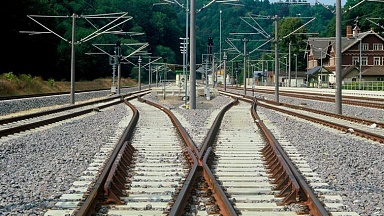RB Rail notes that the addition of PPP in Rail Baltica’s project’s financing strategy reflects the growing tendency in the development of Europe’s transport infrastructure, as well as expand cooperation between state institutions and private investors. The goal of Rail Baltica is using innovative financing solutions to move forward with the project and lower financial risks.
Also read: BNN INTERVIEW | Kulbergs: How conflicts, incompetence and civil service have brought Rail Baltica to the brink of collapse
However, the implementation of PPPs on such a scale in the Baltics also poses challenges that need to be addressed, including adapting the single regulatory environment for complex PPP structures, balancing the distribution of risks between the public and private sectors, securing long-term political commitment and attracting international investors.
Pēteris Celms, Investment Development Manager at RB Rail, points out that by combining private investment with Connecting Europe Facility (CEF) funding, Rail Baltica aims to create a new standard for large infrastructure projects, demonstrating how smaller economies can implement financially sound and strategically important initiatives.
«Initial meetings with major international players, including a large French bank and Japanese infrastructure developers who have expressed an interest in the project, have already taken place,» added Celms.
RB Rail adds that the PPP approach is in line with the vision of the European Commission (EC) and is also to be supported, as evidenced by examples of infrastructure projects in other countries.
As an example, the company cites the project of the new Porto-Lisbon high-speed railway line, which received the largest European Union (EU) funding of EUR 813 million in the last CEF breach. In turn, the next project supported by the amount of the financial allocation is Rail Baltica.
RB Rain notes that the Porto-Lisbon project was an important precedent because it confirms that it is possible to combine CEF financing with PPP model to help resolve the problem of financing deficit when it comes to funding large-scale railway infrastructure projects. In addition to the example of the Porto-Lisbon project, there are a number of other European high-speed railway projects, including those competing with Rail Baltica for EU funding and using the PPP model, including the Lyon-Turin project, which aims to establish a new rail tunnel connection between France and Italy.
Another example is the Brenner Tunnel project, which will connect Austria and Italy with the aim of improving freight and passenger transport through the Alps. Using the PPP approach, the Brenner Tunnel has attracted financial support from both the public and private sectors, demonstrating that transnational PPP projects can be successfully implemented within an appropriate regulatory framework, according to RB Rail.
RB Rail recalls that the EC recently announced an additional EUR 1.2 billion for Rail Baltica construction activities in all three Baltic States, including EUR 346 million for Rail Baltica deployment activities in Latvia. Together with the previously allocated CEF and national co-financing, it increases the total financing available for the construction of Rail Baltica in the Baltics to more than four billion euros.
At the same time, the new Ķekava bypass, which was a PPP project, was completed in Latvia last autumn, and this June the government decided to use the PPP model for the construction of the Bauska bypass, notes the company.
It was previously reported that the supreme audit institutions of Baltic States concluded in their report that there is currently no clarity as to the use and management of the future Rail Baltica railway line.
According to the latest analysis of the costs and benefits of Rail Baltica, the total cost of the railway line in the Baltic States may reach EUR 23.8 billion, including the costs of the first stage of the project in the Baltic States could amount to EUR 15.3 billion, including EUR 6.4 billion in Latvia. In the previous cost-benefit analysis in 2017, it was estimated that the project will cost a total of EUR 5.8 billion.
Construction of the main line of Rail Baltica is planned to commence in 2024.




